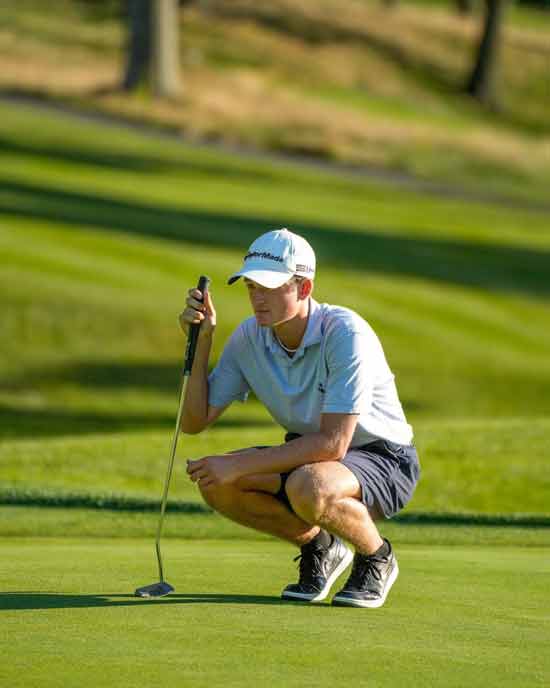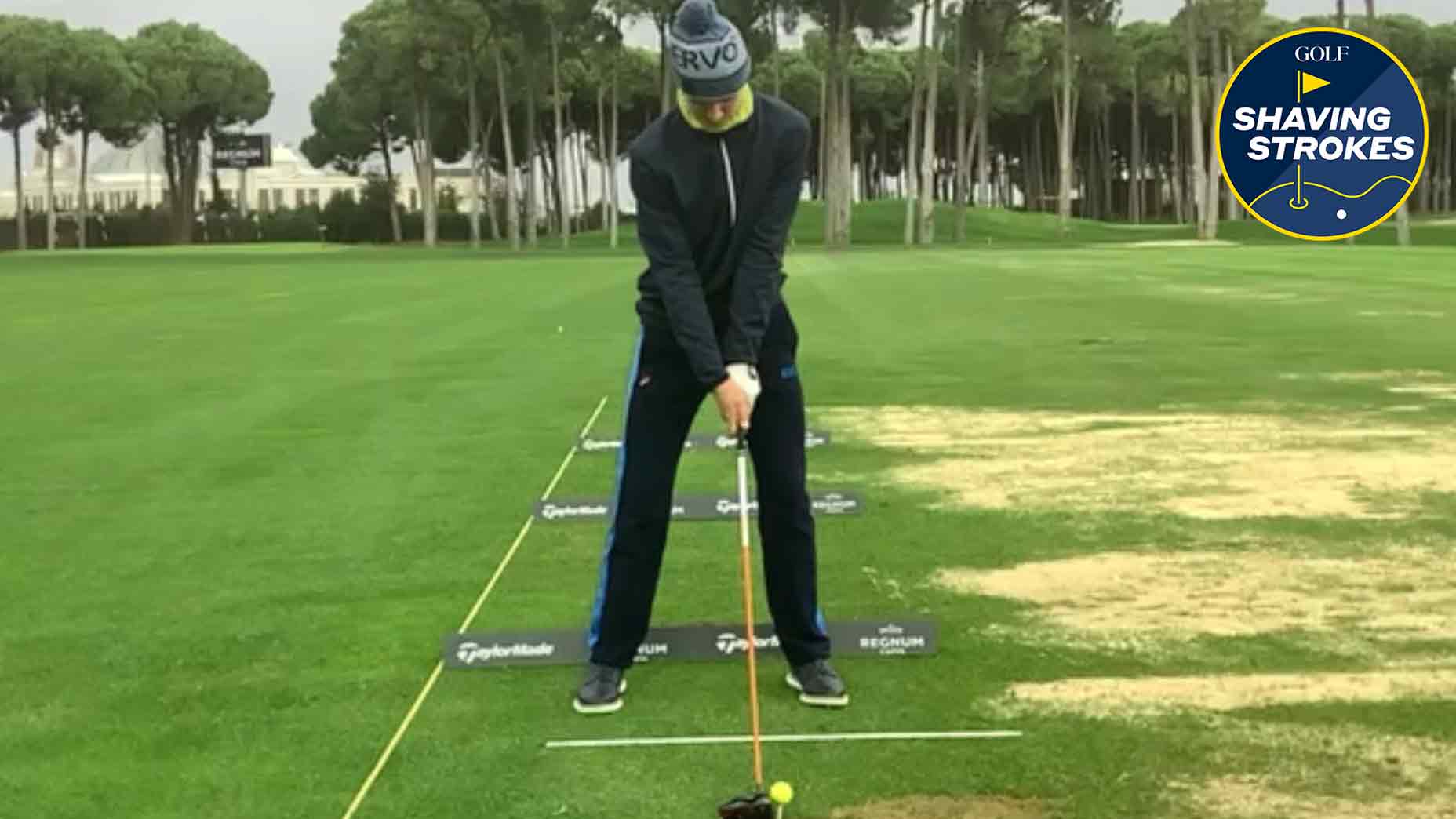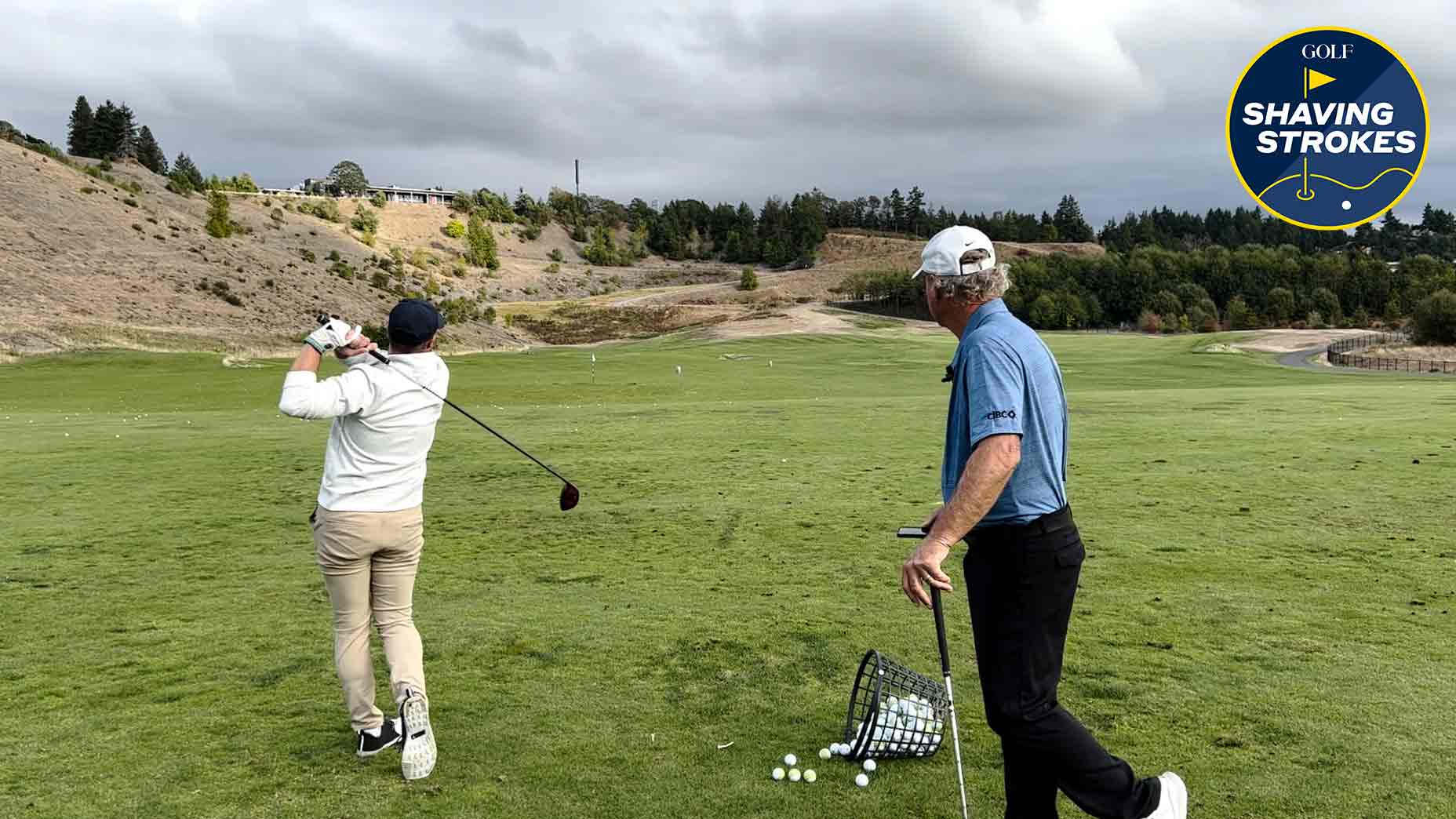This HS golfer went from a 12.8 to a 4.6 handicap in 12 months. Here’s how
- Share on Facebook
- Share on Twitter
- Share by Email

After shaving over 8 strokes from his golf handicap, this teen earned captaincy of his high school team.
Image via Carson Deringer
Welcome to Shaving Strokes, a GOLF.com series in which we’re sharing improvements, learnings and takeaways from amateur golfers just like you — including some of the speed bumps and challenges they faced along the way.
As an (almost) 40-year-old, I’ll often think back to those innocent days of being in high school and having very little responsibilities and all the free time in the world.
There was little stress, lots of fun, and plenty of time to still be a kid. Man, what a time to be alive.
And while I don’t regret much from being a teenager — only a few bad decisions stand out — I do wonder how much better I’d be at golf today had I spent more time taking the game more seriously. Like, if I had a time machine, I’d go back to the year 2000 and actually grind on the range, work with a golf coach and make some golf goals for myself.
How a pre-shot routine unlocked this teen’s true ball-striking abilityBy: John Hughes , Nick Dimengo
Instead, I often just teed it up with buddies because it was something to do, and spent most of that time just yucking it up and busting each other’s chops — which, in all honesty, hasn’t changed much since.
But one teenager who seems to be doing all the right things on the golf course is a high schooler named Carson Deringer, who shaved over eight strokes off his golf handicap index in the past year thanks to the help of PGA Golf instructor Tony Shields from Union League Liberty Hill.
Deringer, a sophomore at Harriton High in Bryn Mawr, Pa., was recently introduced to me by a colleague of mine here at GOLF, who actually coached his golf team. And after hearing his success story, I knew I had to hear more about his improvement.

How this HS golfer shaved 8 strokes off his golf handicap index
Like most golfers around his age, Deringer told me he fell in love with the sport during the pandemic, following in the footsteps of his grandpa, who was a former golf pro.
“I’ve always played golf, mainly because my grandfather was a golf pro,” he tells me. “I was a big baseball player, but after COVID hit, I fell in love with golf. That’s when I started loving it and playing a lot.”
But just because he fell in love with the sport doesn’t mean he was taking it all that seriously early on. In fact, similar to my experience as a teenager, Deringer said he would just go out and have fun, sort of ignoring his score.
“I really didn’t have a handicap, since I was just going out on the weekends for the fun of it,” he adds. “When I did keep score, I would shoot in the low-100s.”
So how did this teenager go from a triple-digits player to someone consistently flirting with the mid-70s? He told me a few different things specifically helped him.
A practice net and a launch monitor
Going to the driving range is great, but it can be a time suck. Plus, on the days when the weather’s really nice, it can be tricky to find a bay because the facility’s often really packed. That’s why Deringer said he asked for a practice net for Christmas a few years ago — which helped him work on his swing mechanics in the offseason.
“Yeah, my parents got me a net to really start practicing during the winter,” he says. “I’ve been using that consistently for about two hours each night.
How this Tiger Woods-approved launch monitor has improved my ball-strikingBy: Nick Dimengo
While working on his mechanics everyday have helped, introducing data into his game has been important, too. That’s why Deringer got himself a launch monitor to track specific stats about his swings.
“I’ve recently gotten a launch monitor. It’s on the cheaper side, but it still works really well,” he says. “It really helps me look at my numbers and see where I need to improve.
“For instance, I was really struggling with my launch angle, so I was recently focusing on that. Just being able to have that number, review it and then get instant feedback is super helpful.”
Swing adjustments
Like most golfers, making swing adjustments is a major part of improving — and Deringer is no different. In fact, he told me three adjustments that helped him the most in his journey from a player shooting in the 100s to someone regularly breaking 80.
“Changing my grip definitely helped a lot. I used to have a baseball grip, but now I use an interlock grip,” he said. “I’ve also really worked on rotating more, making sure my tempo is good.
“To practice my rotation both back and through, I envision throwing my belt buckle right at my target as hard as possible, which has helped me a lot.”
Dialing in his putting

I’ve always said that putting is the great equalizer in the game of golf, and Deringer agreed. It’s why he told me this was the area that most impacted his improvement, which all started with his head position during his stroke.
“My family friend had this putting meter at his house, and there was a line in the center of it, and you want to get your eyes matched up with that,” he told me. “When I first used it, my head was way over the line, so I knew I needed to match it up with the line to make sure you’re fully through the ball.
“Another flaw I had was lifting my head up a lot while putting. You might think it’s not important to keep your head down through the putting stroke, but it really made a difference in my results when I focused on doing that.”
So what’s a typical practice session look like for him? Deringer said it includes lots of putting.
“When I go out to the range, I mainly focus on putting,” he tells me. “I do an hour at the range, but my main focus is putting and chipping. With that, I focus on distance control on both short and long putts, as well as my aim.
“I work from in to out, with most of my time actually spent on shorter putts — since those are the most important putts you have to make. I try to limit three-putts as much as I can because those are round-killers.”
Competing against better players
It’s not surprising to hear Deringer say that playing against better competition has pushed his own game — since there’s a lot you can learn from watching more advanced golfers. It’s why he’s made it a point to play in as many tournaments as he can.
“My goal is to play D1 golf,” he tells me. “To accomplish that, I’m just going to be out there practicing on all parts of my game and playing in tournaments, which have helped my game a lot. Just playing against people who are better than me, seeing how they do things.”
Two specific things have been how these other players read greens and where they miss on approach shots.

“I learn how people read the greens, and how to look at it from both sides of the hole,” he adds. “I used to only look at it right behind the ball, but once I started looking at it from both sides and all around the hole, it led to making a lot more putts.
“Another thing I’ve learned from watching better players is where they miss a shot. Because you don’t want to miss the shot where it’s going to leave you in a hazard, you want to miss it in a place where you’ll be safe and be able to get an up and down — and give yourself a chance at a two-putt.”
His advice to other amateurs?
Finally, as a mid-handicapper myself who’s on a quest to break 80, I had to know what advice Deringer has for players like myself. Without hesitation, he said it’s all about the short game.
“The short game has brought down as many strokes as possible in my game, way more than my long game has,” he says. “And that’s what I think people should work on the most if they’re serious about improving fast.”

Swing Caddie SC300i Launch Monitor
View Product
Latest In Instruction

Nick Dimengo
Golf.com Editor











